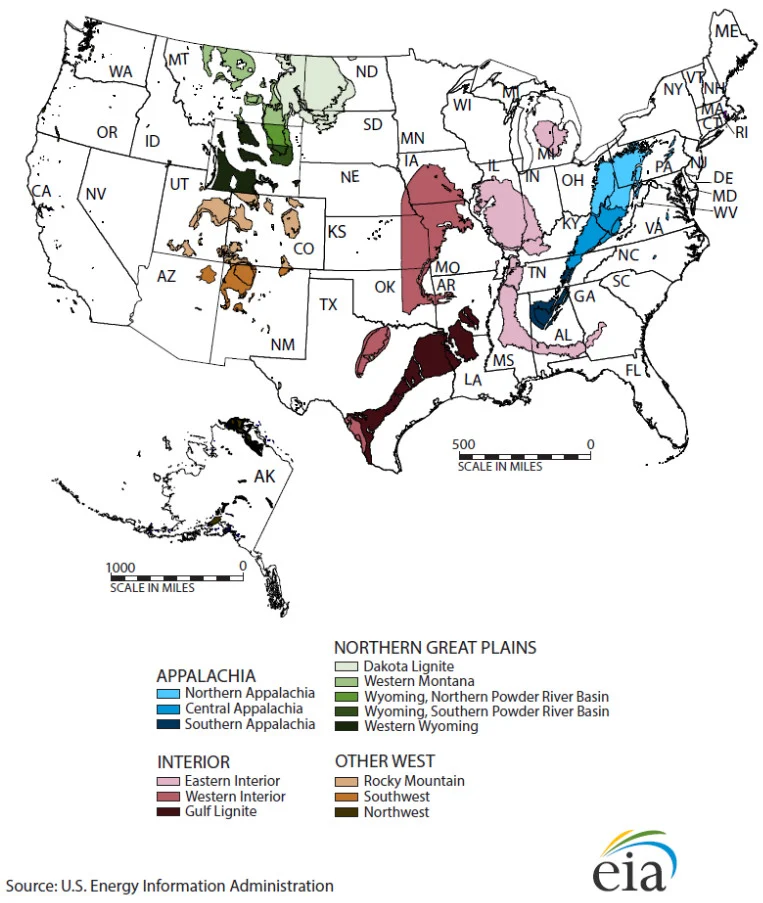Between 1980 and 2000, U.S. coal mining productivity increased at an average rate of 6.6% per
year, from 1.93 to 6.99 short tons per miner per hour. The major factors underlying these gains
were interfuel price competition, structural change in the industry, and technological improvements in coal mining. Between 2000 and 2013, however, growth in overall U.S. coal mining productivity has
been negative, declining at a rate of 1.8% per year to 5.54 short tons per miner-hour in 2013. By region, productivity in all but one (Alaska/Washington) of the coal producing basins has declined from its productivity level in 2000. In the Central Appalachian coal basin, which has been mined extensively, productivity declined by 50% between 20 00 and 2013, corresponding to an average decline of 5. 2% per year. While productivity declines have been more moderate at the highly productive mines in Wyoming’s Powder River Basin, coal mining productivity in this region still fell by 30% between 2000 and 2013 corresponding to an average rate of decline of 2.7% per year. Of the top coal producing regions showing declines, the Eastern Interior has shown the best overall performance, with coal mining productivity declining by only 2.7% between 2000 and 2013, or 0.2% per year. The Eastern Interior region, which has a substantial amount of thick, underground-minable coal reserves, is currently experiencing a resurgence in coal mining activity, with several coal companies either opening or in the process of opening new, highly productive longwall mines.
Via www.eia.gov

This post may contain affiliate links. As an Amazon Associate, I earn from qualifying purchases.
Comments
Post a Comment